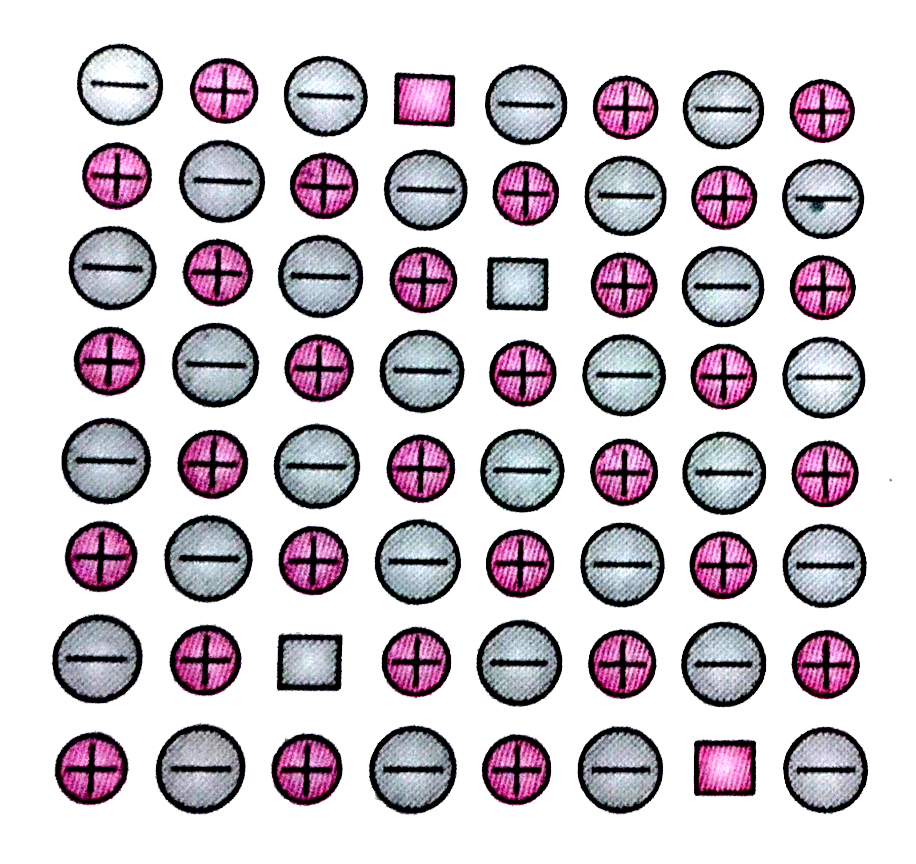KBr shows which of the following defects ?
Frenkel defect
Schottky defect
Metal excess defect
Metal deficiency
The correct Answer is:B
To determine which defect KBr shows, we can analyze the properties of the ionic compound KBr and the types of defects that can occur in ionic crystals.
1. Understanding Ionic Compounds:
- KBr is an ionic compound composed of potassium ions (K⁺) and bromide ions (Br⁻).
2. Identifying Ionic Sizes:
- The sizes of K⁺ and Br⁻ ions are relatively similar. This similarity in size is crucial for determining the type of defects that can occur in the crystal lattice.
3. Types of Defects:
- In ionic crystals, defects can be classified mainly into two types: Schottky defects and Frenkel defects.
- Schottky Defect: This occurs when equal numbers of cations and anions leave the lattice, creating vacancies. This defect is more likely when the cations and anions are of similar size.
- Frenkel Defect: This occurs when a cation leaves its position and occupies an interstitial site, creating a vacancy in its original position. This defect is typically observed when there is a significant size difference between cations and anions.
4. Application to KBr:
- Since K⁺ and Br⁻ ions are of similar size, KBr is more likely to exhibit Schottky defects. In this case, equal numbers of K⁺ and Br⁻ ions leave the lattice, maintaining electrical neutrality while creating vacancies.
5. Conclusion:
- Therefore, KBr shows Schottky defects.
Final Answer:
KBr shows Schottky defects.
---
- KBr is an ionic compound composed of potassium ions (K⁺) and bromide ions (Br⁻).
- The sizes of K⁺ and Br⁻ ions are relatively similar. This similarity in size is crucial for determining the type of defects that can occur in the crystal lattice.
- In ionic crystals, defects can be classified mainly into two types: Schottky defects and Frenkel defects.
- Schottky Defect: This occurs when equal numbers of cations and anions leave the lattice, creating vacancies. This defect is more likely when the cations and anions are of similar size.
- Frenkel Defect: This occurs when a cation leaves its position and occupies an interstitial site, creating a vacancy in its original position. This defect is typically observed when there is a significant size difference between cations and anions.
- Since K⁺ and Br⁻ ions are of similar size, KBr is more likely to exhibit Schottky defects. In this case, equal numbers of K⁺ and Br⁻ ions leave the lattice, maintaining electrical neutrality while creating vacancies.
- Therefore, KBr shows Schottky defects.
KBr shows Schottky defects.
Similar Questions
Knowledge Check
Which of the following defects is also known as dislocation defect?
AFrenkel defectBSchottky defectCNon-stoichiometric defectDSimple interstitial defect
which of the following defects decrase the density decrease the density ?
View SolutionWhich of the following defects does KBr show?
View SolutionWhich of the following defects decrease the density ?
View SolutionWhich of the following defects is represented in the given figure ?

View SolutionWhich of the following defects, if present, lowers the density of the crystal ?
View SolutionWhich of the following defects is present in KCl crystals ?
View Solutionwhich of the follwing defects is also known as dislocation defect ?
View Solution
